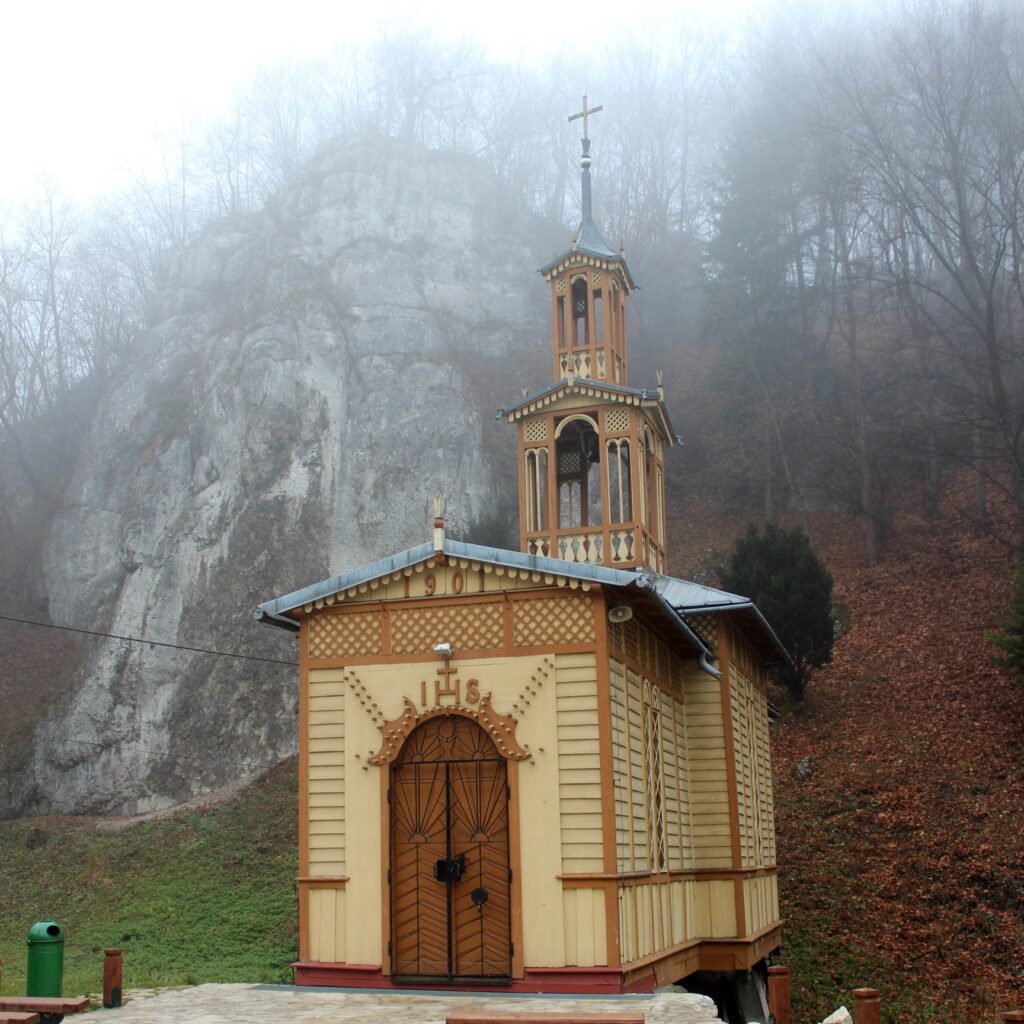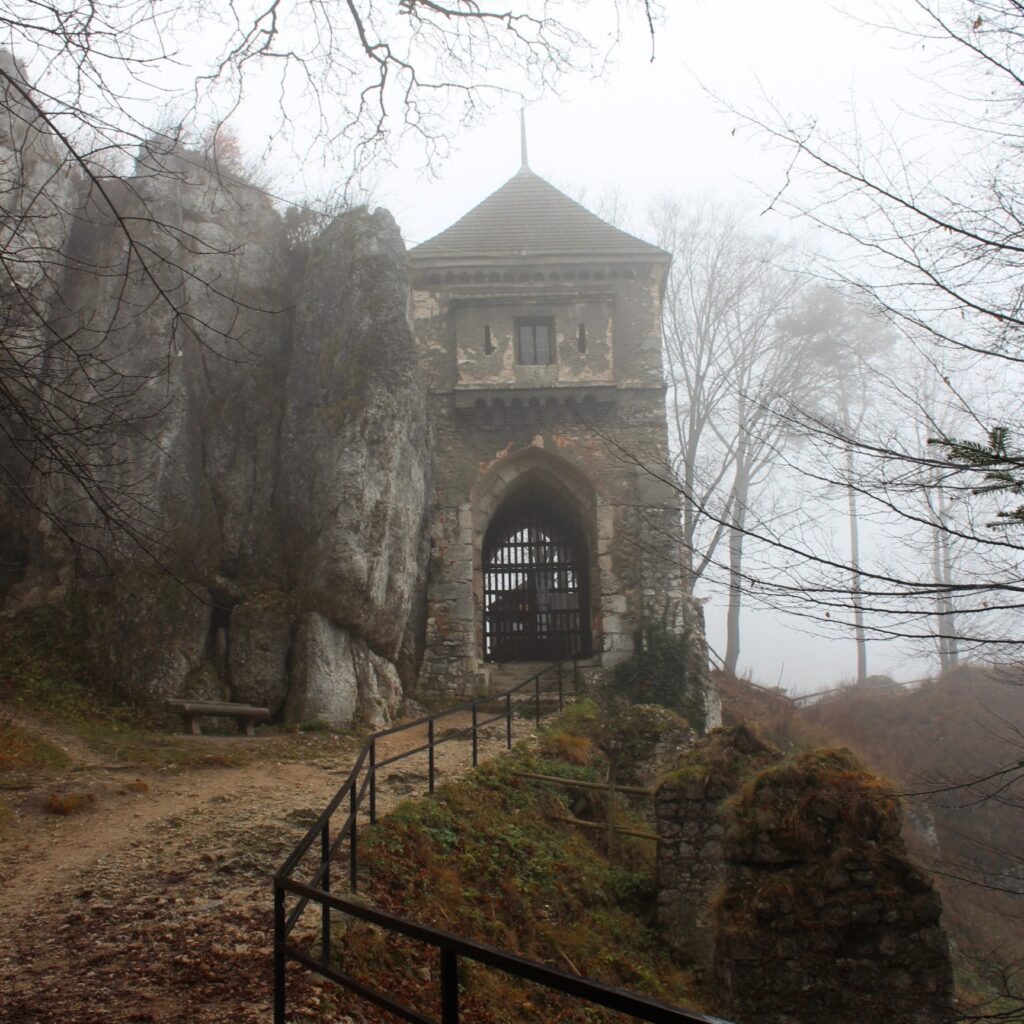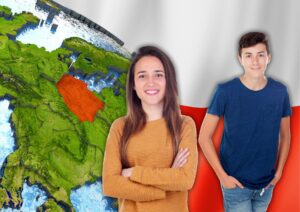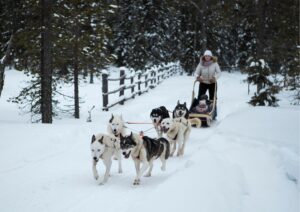If you’re looking for an escape from the city and want to experience the natural beauty of
Poland, then a trip to Ojcowski Park Narodowy is definitely worth considering. Located just a
short drive from Krakow, Ojcowski Park Narodowy is a stunning national park that boasts
some of the most dramatic limestone cliffs in Europe, as well as a medieval castle that dates
back to the Renaissance era.
The Park’s Geology
One of the highlights of the park is its geology. The park is home to a series of stunning
limestone cliffs, including the Krakowska Gate, which is a natural arch that’s over 25 metres
tall. Visitors can also explore the Błędne Skały, which are a series of rock formations that
have been shaped over millions of years by wind and water erosion.
The Castle
Another highlight of the park is the Pieskowa Skała Castle, which is located in the heart of
the park. The castle was built in the 14th century and is considered to be one of the most
beautiful Renaissance castles in Poland. The castle is open to visitors and features an
impressive collection of Renaissance art and furniture.
Trails
Visitors can explore the park’s many trails, which range from easy to challenging. One of the
most popular trails is the Eagle’s Nest Trail, which takes visitors past the park’s most iconic
landmarks, including the Krakowska Gate, the Błędne Skały, and the Pieskowa Skała Castle.
There are also many other trails that take visitors through the park’s beautiful forests and
along its tranquil rivers.
Why Choose a Private Tour
Choosing a private tour of Ojcowski Park Narodowy is the best way to experience all that the
park has to offer. A private tour allows you to explore the park at your own pace and with
your own personal guide who can answer all of your questions and provide you with insider
knowledge about the park’s history and geology. Additionally, you won’t have to worry about
transportation to and from the park, as your guide will take care of everything for you.
In conclusion, Ojcowski Park Narodowy is a must-visit destination for anyone interested in
experiencing the natural beauty of Poland. With its dramatic limestone cliffs, medieval castle,
and beautiful trails, the park is a true gem in the country’s crown. Choosing a private tour is
the best way to experience all that the park has to offer, so be sure to book your tour today
See attractive tours organized from Cracow ➡https://www.comforttours.pl/tours/
Creation history
Source; http://www.ojcowskiparknarodowy.pl/main/historia_utworzenia.html
Efforts to protect the nature of the Prądnik Valley date back to the beginning of the 19th century and are connected with the first research carried out in this area. At that time, many interesting plant and animal species were discovered here and caves were scientifically explored. In addition, the Ojców landscape became the subject of reportages and memoirs, and an inspiration for many artists and poets. The beauty of the Prądnik Valley, the rich flora and fauna, the interesting archaeological past prompted numerous newcomers to protect this corner of the then Congress Kingdom, which was even called the “Polish Switzerland”.
First attempts to protect the Prądnik Valley nature
Voices of protest against the exploitation of the forests appeared in the press, e.g. condemning the barbaric actions of Wroclaw merchants who destroyed the forests of Fatherland by cutting down the forest stand covering the Jurassic plateau in the area of Smardzowice, Wola Kalinowska and Sąspów, disregarding the conditions set out in the sales contract.
The legislation of the time completely ignored nature conservation issues. Cave mud was dug up with impunity and valuable fertiliser material was extracted from it.The Koziarnia and Nietoperzowa Caves, where the mining of silt was carried out in 1877-78 by the Upper Silesian Mining Authority under the direction of O. Grube, suffered the greatest losses. In the remaining caves, generally open to the public, the stalactites were broken off, which was protested against in descriptions of Ojców and in press articles.
A great contribution to the protection of Ojców’s nature was also made by its former owner, Jan Zawisza, an amateur archaeologist, the first researcher of the local caves, who started the gradual buying out of the Prądnik Valley and the surrounding area from the hands of Wroclaw merchants.Further buyouts were continued by the next owner of Ojców – Ludwik Krasiński.
Polish society, seeing the destruction of nature in the Prądnik Valley, reacted quickly to manifestations of vandalism.
Despite the lack of appropriate orders from the authorities of the time, the first steps were taken to save nature.Thus, a joint-stock company, founded at the end of the 19th century on the initiative of Adolf Dygasiński, bought the castle in Pieskowa Skała together with the surrounding forest and rocks.
Creation of the Regional Museum
Stanisław Jan Czarnowski, founder of the regional museum in OjcówThe Ojców regional museum, founded by Stanisław Jan Czarnowski at the end of the 19th century, also played a didactic role in protecting the nature of the Prądnik Valley.However, these and similar actions of individuals did not have much significance until World War I, as no efforts were made to surround the Prądnik Valley with legal protection.It was only when the State Commission for Nature Protection, later transformed into the State Council for Nature Protection, headed by Prof. Dr. Władysław Szafer, was established in the inter-war period that the issue of protecting the Ojców nature took on a different status. On the initiative of Prof. Szafer, the first natural monograph on the Prądnik and Sąspowska Valleys was compiled, published in the magazine “Ochrona Przyrody” in 1924. This monograph included a characterisation of the geographical environment of the Ojców area and a plan and description of the boundaries of the future reserve.The projected reserve was to include the Czartoryski estate and communal properties along the Prądnik Valley from Sułoszowa to Hamernia and the Sąspowska Valley from the village of Sąspów to the mouth of the valley at Ojców.Zlota Gora was intended for the construction of a spa estate as part of the regulation of the spa.

Nature reserve
According to the authors of the project, Professor W. Szafer and engineer S. Richter, the nature reserve, apart from completely protecting the natural treasures it contained, was to serve science as a research area, and for tourists visiting the area and for summer visitors (…) to be a source of unforgettable aesthetic experiences.
Professor Władysław Szafer, the initiator of the establishment of the ParkThe proposal to create the reserve in the interwar period was not, however, realised, and through new tourist investments, such as the construction of roads, a power plant and further spa boarding houses, Ojców was made available to a wider circle of society.
The inter-war period did not bring progress in surrounding the Ojców area with legal protection.It was only thanks to Professor Szafer’s firm stance that the implementation of plans dangerous to the local nature was weakened or even postponed.
After World War II, efforts to create a reserve were resumed.This time, too, the energetic activity of Professor Szafer – then a delegate of the Minister of Education for Nature Conservation – contributed to the organisation of many conferences, at which the idea of creating a reserve, and in time a national park, projected at Ojców was reiterated. In addition to Prof. Szafer, people dedicated to this idea included: W. Marcinkowski, J. Kornaś, S. Smólski, S. Jarosz, T. Szczęsny and K. Bukowski. In the years 1946-53 several meetings were held on the subject of the future park at the provincial level, at the Polish Academy of Sciences and at the State Council for Nature Protection.





